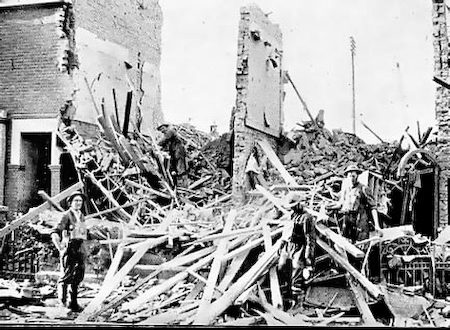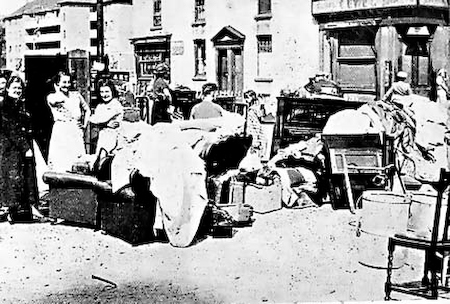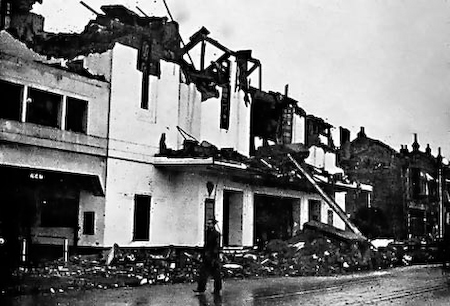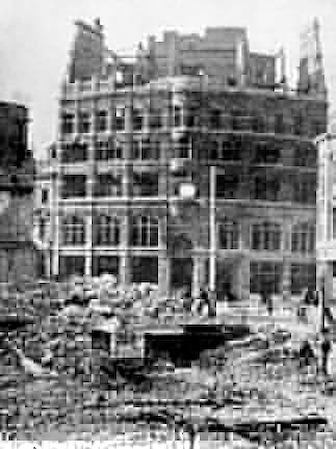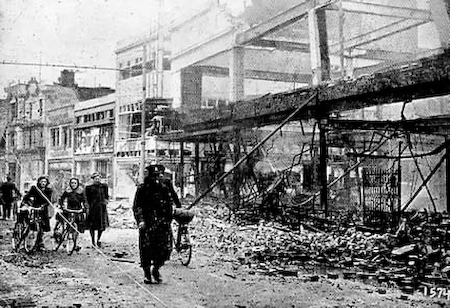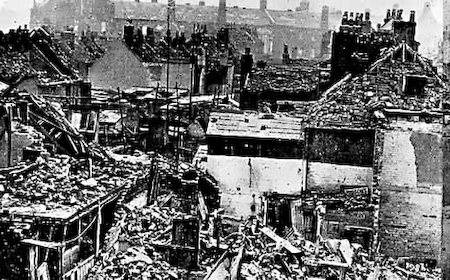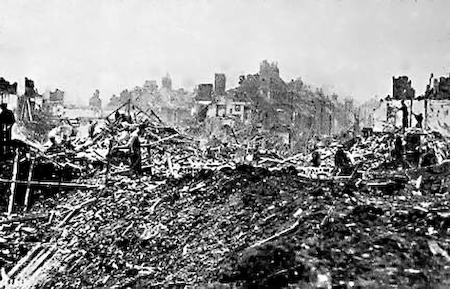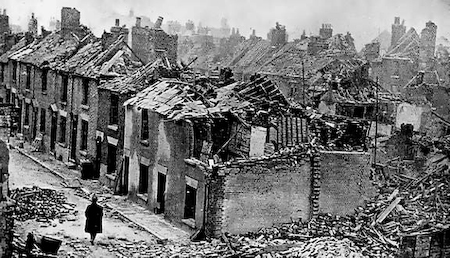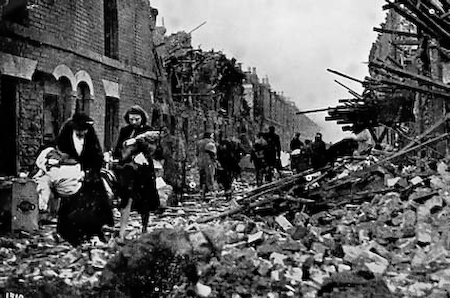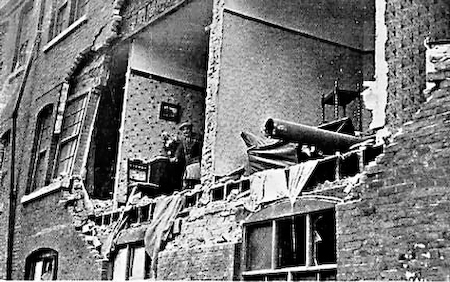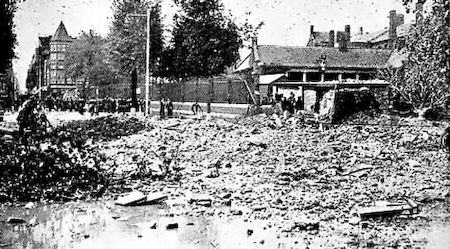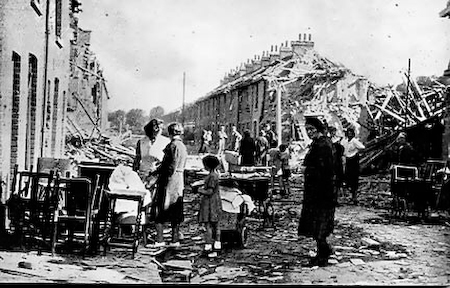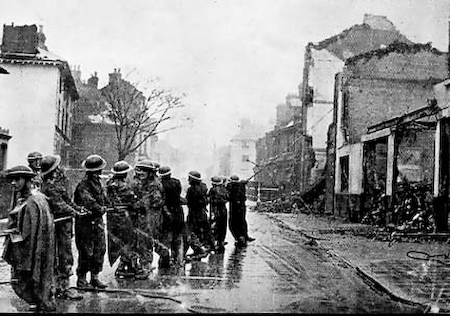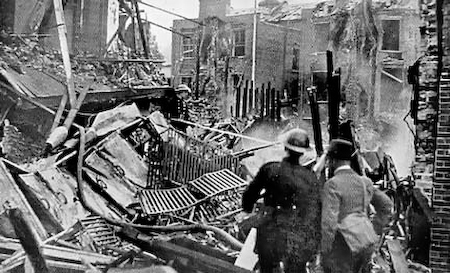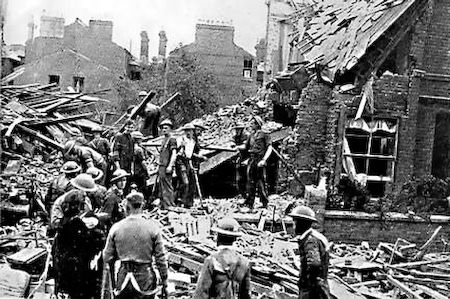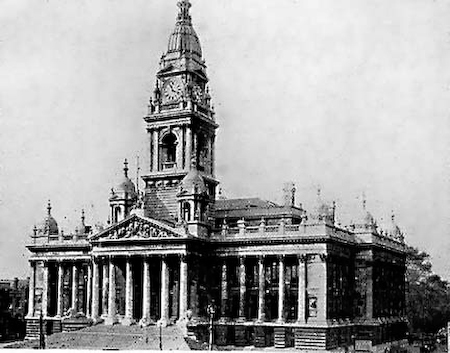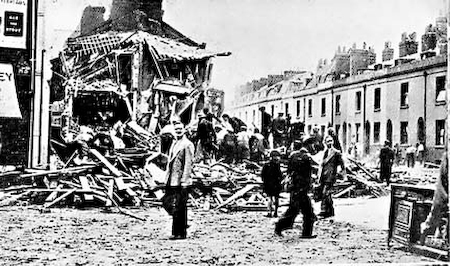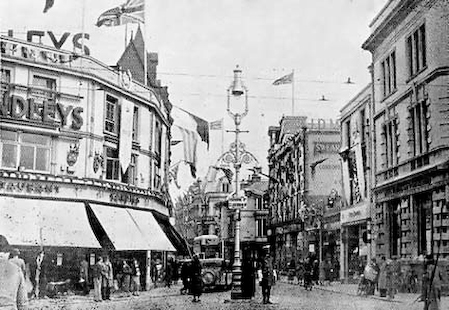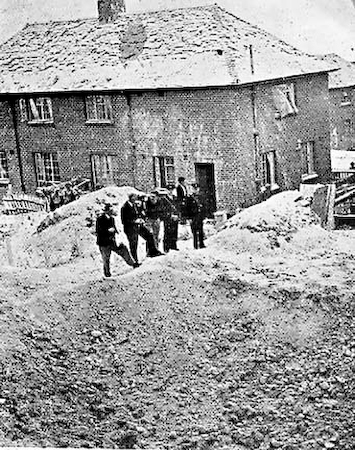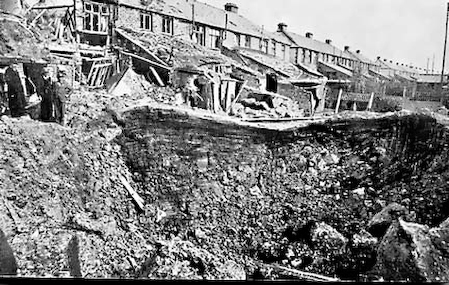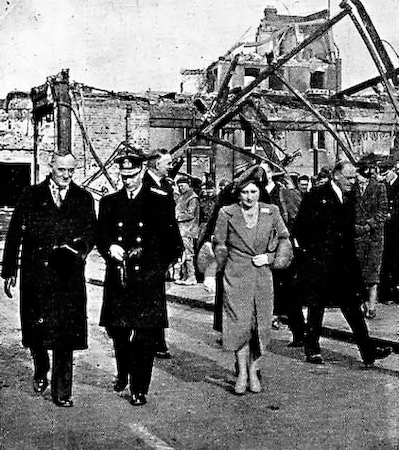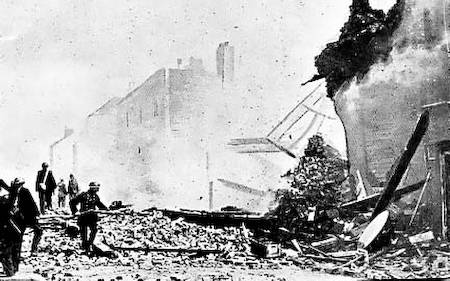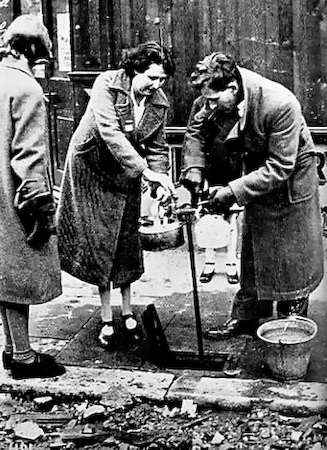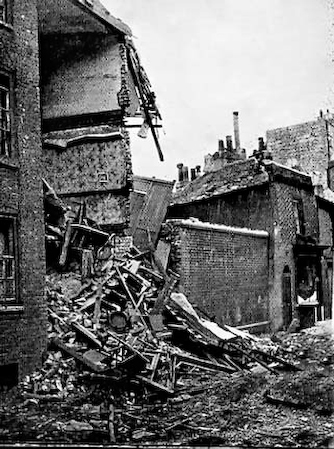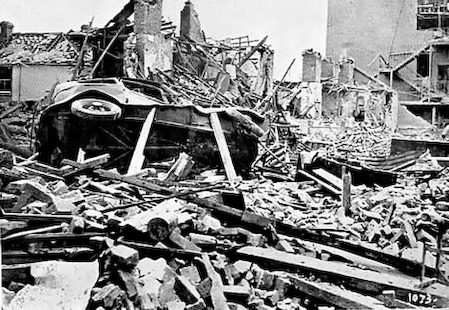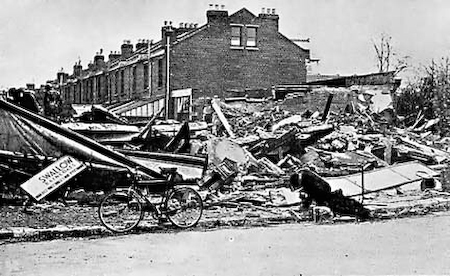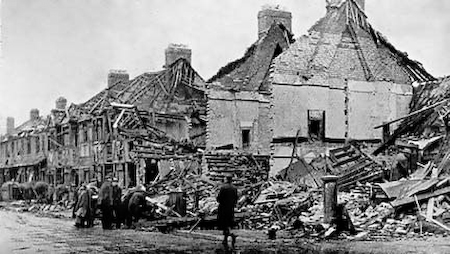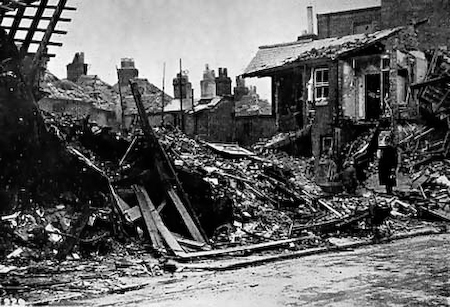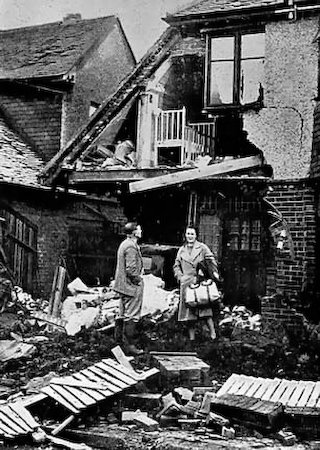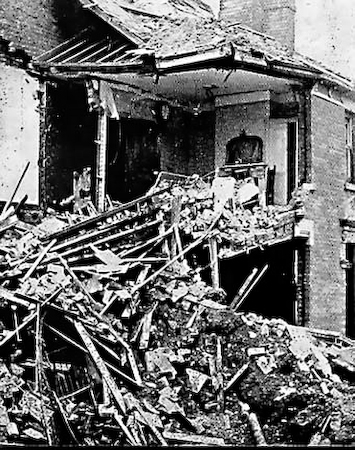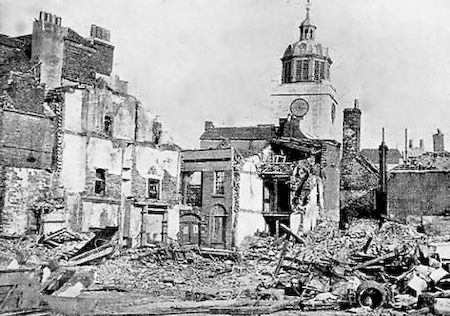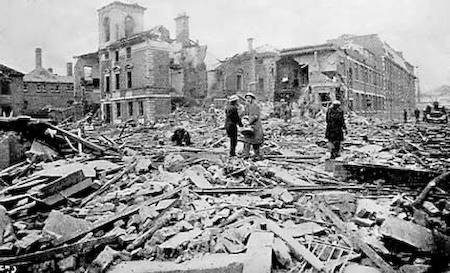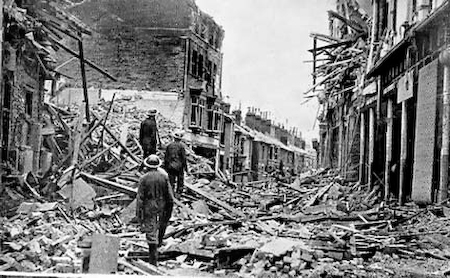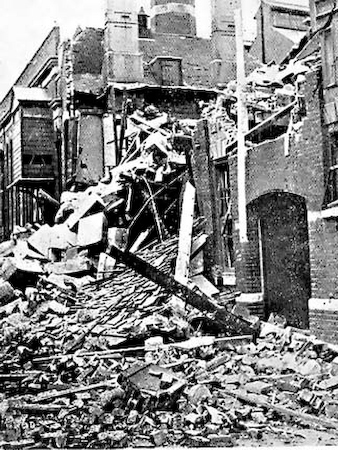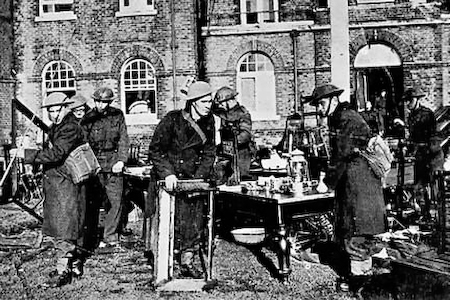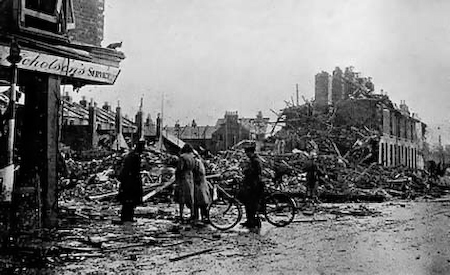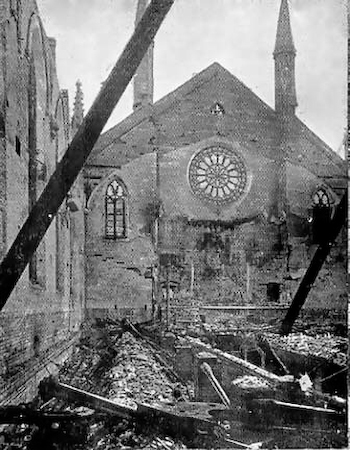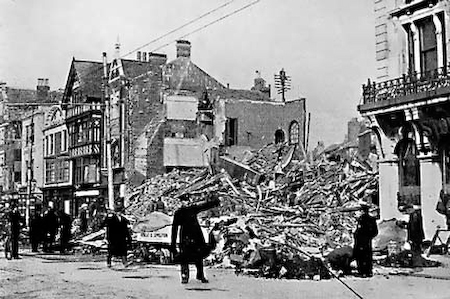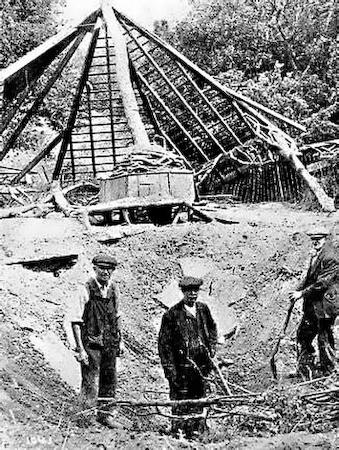The old city of Portsmouth took a terrible battering during the war, with the areas of Portsea and Landport – because of the nearness to the dockyard and the mighty battleships – becoming a prime target for Luftwaffe pilots.
During those harrowing war years thousands of homes and public buildings were lost, especially on the terrible night of January 10, 1941, when 25,000 incendiaries and numerous high-explosive bombs rained upon the city, which at one time had 28 major fires buring and no water supply to tackle them.
After the war the people began to rebuild their shattered lives, and the city fathers faced the task of reconstructing Portsmouth. But before work could begin the dangerous bomb sites had to be made safe – by shoring up buildings which could be rebuilt, and by clearing the rubble of those with no hope.
WYMERING DEEP TUNNEL SHELTER
| General history |
| The Wymering tunnel shelter was built during WWII to serve as an air raid shelter for the people of Portsmouth. It was located in the Wymering chalk pit (sometimes referred to on maps as the “old chalk pit”), against a sheer chalk face. It could accommodate 2565 people and had 3 tier bunk beds, first aid and canteen facilities. For a period of time during WWII the shelter was used as a Hospital. This lead to the creation of a local legend which still persists today; that there was a purpose built Underground Hospital within Portsdown, but it was just the re-use of this shelter.The tunnelling work was started in July 1941 by McAlpines Construction Company, and it was opened on the 2nd January 1942. It finally closed on 19th February 1945. Another shelter of the same design was located in London Road. |
| The shelters fate |
| This tunnel is still quite well remembered among the locals, and I receive a good deal of e-mail from people who used to explore them when they were kids, but the portals no longer exist, they really have been sealed for good.I remember in the 1960s seeing the main entrance which was bricked-up then. Some time after, the portal was completely covered in tons of chalk, forming a slope about 15 feet high against the chalk face. The site more or less returned to nature, and was difficult to find, unless identified from old photographs. (see below)In the 1995 the tunnel was reopened, as it was proposed to build houses within the chalk pit, and the stability of the area needed to be assessed. The account states that the tunnels were in very good condition but that the air inside was completely foul. After the inspection the portal was concreted up, and once again covered in chalk. |
